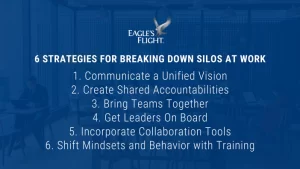Think back to the best boss you’ve ever worked for. How would you describe them? Often, words such as inspiring, motivating, caring, and authentic come to mind. It’s these leaders that employees want to follow and who make a lasting impact on their career.
Outstanding bosses are able to combine their interpersonal and communication skills to inspire the people they lead. It’s these skills that motivate others and creates within them a desire to follow, or be part of, their vision. Although interpersonal and communication skills are often considered to be something people are born with, it can be broken down into different techniques that can be learned, making it possible for every leader to be one that others want to follow.
There are ten traits that together combine to create a leader that has the ability to motivate and draws others to be part of their team.
1. Be Happy.
It projects a sense of personal confidence and well being and tends to make others feel positive about the culture and excited about the team they find themselves on. Employees want positive work relationships and when their leaders foster a happy environment it increases motivation, morale, and stronger bonds.
2. Be Decisive.
Others will be confident in your leadership, the direction, and actions being taken if decisions are made quickly and those decisions are well-informed. Most importantly, a decisive leader makes decisions that are clear and final.
3. Be Knowledgeable.
Being well-prepared breeds confidence. It allows the decisions that are being made to be done so decisively, and on the basis of relevant information and facts.
4. Listen.
Everyone appreciates being heard and being listened to. When employees know that their thoughts are being considered, they feel freer to express their ideas, opinions, and perspective. One study found that employees who feel their voice is heard are 4.6 times more likely to feel motivated and empowered to perform their best work.
5. Have Innovative Ideas.
Being prepared with ideas, alternatives, and new solutions that others have not considered, naturally allows people to turn to the one with ideas for suggestions and direction. Be prepared by thinking in advance of possible ideas which are creative or innovative, and certainly different from those which are usually put forward.
6. Communicate Clearly.
Acquiring the ability to communicate in a way that can be understood by others is an essential leadership quality. Leaders who communicate clearly help teams understand expectations, give feedback and coaching that results in performance improvement and develop deep, authentic connections with others.
7. Be Encouraging.
Everyone wants to know if they’re doing a good job. Encouraging others is demonstrating the ability to spot something positive in the midst of a task, or at its completion, and then speaking encouraging words. When you’re a leader, your words are magnified and hold immense power. When you positively affirm an employee, that encouragement motivates the employee to continue.
8. Create an Atmosphere of Fun.
People enjoy working in a fun-filled environment, and often a little bit of creative thought and energy focused on creating an environment that is a pleasant one to work is worth the effort. For example, one of our leaders at Eagle’s Flight has a kids bowling set at the end of a long hallway. Any time a team member has a “win” they get to take a bowl. This motivates the entire team, creates an atmosphere of fun, and celebrates that employee’s success.
9. Tell the Truth.
We may believe people would rather not be told the truth, however, this is rarely the case. In most instances, people appreciate the truth if it is delivered clearly and kindly. This in turn creates trust that people are able to rely on what you say.
10. Be Enthusiastic.
Attitudes are contagious. When you’re enthusiastic this energy overflows to others. Remaining positive, outgoing, and excited about the future will result in others wanting to be part of that excitement and follow your leadership.
Leadership traits are learnable and by consciously making an effort to exhibit these ten traits, your employees will be more motivated and inclined to follow your lead. By doing so, one day, when your employee is asked to think of the best boss they’ve ever worked for, hopefully, they describe you.











